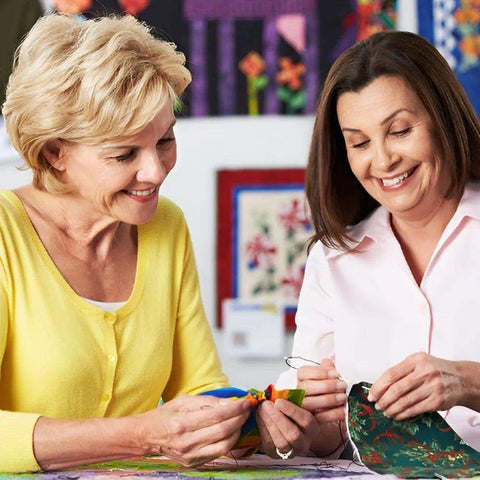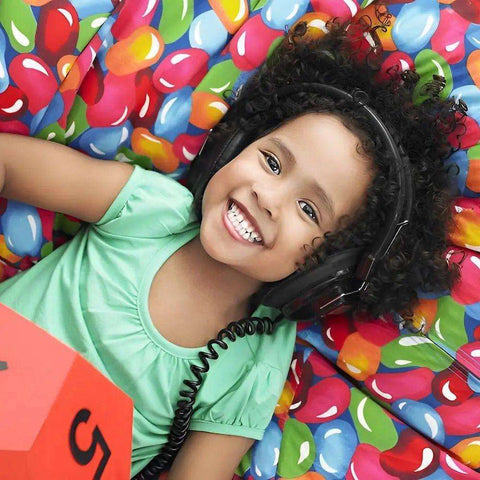After reports of two deaths and a massive recall, some people are beginning to question the safety of beanbags. But are beanbags dangerous?
Are dangerous? This concern often surfaces after tragic incidents or alarmist headlines. While it’s wise to question product safety, facts matter. When properly manufactured and used responsibly, bean bags are no more dangerous than other furniture. Reputable manufacturers ensure their products are product safe and comply with strict safety codes, including Australian and International standards. Like anything else, safety depends on design, materials, and their proper use. Let’s explore the truth behind the risks, regulations, and benefits of owning bean bags.
Introduction to Bean Bags
Bean bags are a versatile and popular type of furniture, loved for the optimum comfort and relaxation they provide. Unlike traditional chairs, a bean bag is filled with materials such as polystyrene beads, buckwheat hulls, or foam, allowing it to mould perfectly to the shape of your body. This makes bean bags a favourite in living rooms, kids' rooms, offices, and even outdoor spaces. Available in a whole range of styles, sizes, and fabrics, bean bags can suit any décor or need.
While bean bags offer a soft and supportive seating option, it’s important to be strongly aware of potential hazards, especially when it comes to children and pets. The type of filling, the quality of the bean bag cover, and the construction all play a role in bean bag safety. Whether you’re looking for a cozy spot to relax or a fun addition to your child’s playroom, understanding the materials and safety features of your bean bag is essential for everyday use.
The Truth Behind Bean Bag Safety Concerns
In 2014, Ace Bayou Corp. recalled more than 2.2 million bean bags in the U.S. Two children had tragically died after crawling inside chairs with faulty zippers and suffocating. These bean bags failed to meet U.S. Consumer Product Safety Commission (CPSC) guidelines, lacking childproof zippers. The consumer commission plays a crucial role in setting and enforcing safety standards for products like bean bags, protecting consumers, especially children.
The recalled products were sold at Walmart, Amazon, and Big Lots. They were manufactured before July 2012 and should no longer be in use. The CPSC advised returning or repairing them to prevent access to the filling.
These events remind us that safety flaws—not bean bags themselves—were the cause of harm. Responsible manufacturing and usage are key. Similar oversight is provided by Australian competition authorities, who enforce strict safety regulations for bean bags in Australia.
Materials That Can Pose Health Risks
Aside from faulty zippers, materials can also introduce risks. For instance, vinyl covers have been linked to chemical hazards like phthalates, some of which are known carcinogens. Some materials used in bean bags can also off-gas harmful chemicals, such as flame retardants or chemical coatings, contributing to indoor air pollution. Similarly, expanded polystyrene (EPS) bead filling poses choking or suffocation hazards if leaked. Prolonged exposure to heat or sunlight can weaken certain materials in the fabric and foam, increasing the risk of damage or safety hazards.
When buying, choose:
-
Non-toxic, certified fabric materials
-
Durable, double-stitched seams
-
Child-resistant or locking zippers

Understanding Bean Bag Safety Regulations
U.S. Voluntary Standards
The CPSC introduced voluntary safety guidelines in 1996. These require:
-
Permanently disabled or missing zippers on non-refillable bean bags
-
Locking zippers for refillable models
-
Durable, tear-resistant fabric
-
Clear suffocation/choking hazard labels
While not legally binding, these standards are widely followed by responsible brands.
Australia's Mandatory Standards
Australia takes bean bag safety a step further. The ACCC enforces mandatory standards under 2004 legislation. All bean bags sold in Australia must:
-
Have child-resistant fasteners
-
Include warning labels
-
Use strong, burst-resistant materials
-
Prevent openings large enough for child entry
These regulations specify which types of bean bags are covered by the mandatory standards, ensuring that only compliant products are sold.
These laws significantly reduce bean bag injuries and fatalities nationwide.
Safety Features for Bean Bags
To make bean bags safe for everyone in the family, manufacturers have introduced a range of important safety features. One of the most crucial is the child-resistant slide fastener or child-resistant zipper, which helps prevent children from easily opening the bean bag and accessing the filling inside. This is especially important because the small, lightweight beads commonly found in bean bags can pose a risk if inhaled or ingested.
High-quality fabrics are another key safety feature, as they make the bean bag cover more durable and less likely to tear or burst open during everyday use. Many bean bags also come with clear warning labels that alert users to potential hazards, such as choking risks or the need for adult supervision. When shopping for a bean bag, always check for these safety features—secure zippers, strong seams, and visible warning labels—to ensure the product is suitable for children, pets, and the whole family.
Common Bean Bag Injuries (And How to Prevent Them)
Most injuries from bean bags are minor and preventable. These include:
-
Choking on spilled filling
-
Slipping off large or unstable bags. Ensuring children sit properly on appropriately sized bean bags can help prevent falls and other accidents.
-
Tripping over oversized bags in walkways
-
Allergic reactions to synthetic materials
Use proper placement, maintenance, and selection to prevent these incidents.
How to Choose a Safe Bean Bag
Use this checklist to make a safe purchase:
-
Look for childproof or locking zippers
-
Check for double-stitched seams
-
Choose non-toxic, flame-retardant fabrics
-
Ensure age-appropriate sizing and soft placement zones
-
Confirm the presence of safety warning labels
Safe bean bags feature zip lock mechanisms, specialised zipper handles, and zipper sliders with lock catch systems to prevent children from accessing the filling. Child safety zips are designed so you cannot simply slide the zip open; instead, you need a tool like a paper clip or safety pin to operate the lock catch and access the interior. This ensures that only adults can open the bean bag for refilling or cleaning, maintaining child safety at all times.
Warning Signs and Precautions
When using bean bags, it’s essential to be aware of warning signs that may indicate a safety risk. If you notice small lightweight beads present outside the bag, or if the bean bag filling is leaking, this could pose a severe danger to small children and pets. Ingesting or inhaling these beads can lead to choking or airway obstruction, making it essential to address any damage immediately.
Always follow the manufacturer’s instructions for use and maintenance, and regularly inspect your bean bag for loose seams, faulty zippers, or other signs of wear. Supervise young children and pets when they are using bean bags, and never allow them to play with or crawl inside the bag. By being proactive and taking these simple precautions, you can minimise risks and ensure that your bean bag remains a safe and comfortable addition to your home.
Bean Bags and Young Children
If children use your bean bag, you must take extra care. Bean bags can pose specific risks for babies and toddlers, including suffocation hazards, so constant supervision is essential. Young kids may unzip or bite bags, risking exposure to the inner filling. Parents should be especially vigilant about child safety, ensuring that toddlers and babies do not use bean bags for sleep, and only choose a toddler's bean bag with child-proof zippers, safety locks, and other features designed for young children. Always supervise their use and select child-safe products that comply with safety standards. Child safety is paramount, and parents should always follow guidelines for safe use with babies and toddlers. Even the safest bean bag can become dangerous if misused or left in disrepair.
Inspect regularly for wear and tear. Replace or repair any bean bag with damaged seams or faulty closures.
Are Bean Bags Safe for Pets?
Pets can also pose challenges. Dogs and cats may chew or claw at bean bags, exposing harmful fillings. These safety considerations are important for both small children and pets, as they can be at risk from exposed fillings. Choose pet-friendly models made from chew-resistant fabric, or buy purpose-built pet bean bags with sealed interiors and washable covers.
Health Benefits of Using Bean Bags
When made properly, bean bags provide more than just comfort. They offer ergonomic support, helping to relieve pressure points and maintain proper posture. Many therapists recommend bean bags for patients recovering from injury or seeking a soft, flexible seating solution.
They're also popular in schools, offices, and therapeutic environments. Flexible filling enables the bean bag to conform to the body's shape, reducing strain and promoting relaxation.
Eco-Friendly and Non-Toxic Alternatives
Modern consumers demand sustainability. Today's market includes bean bags filled with:
-
Organic buckwheat hulls
-
Plant-based memory foam
-
Recycled foam or polyfills
Covers made from organic cotton, hemp, or canvas offer a non-toxic, sustainable choice for eco-conscious buyers.

So, Are Bean Bags Dangerous?
The short answer? Not when made and used properly. While tragic accidents have occurred, these were caused by poor design or misuse - not the concept of bean bags themselves. Today’s products are held to higher safety standards than ever before.
When shopping, focus on certified safety features, durable construction, and age-appropriate designs. Proper usage and maintenance ensure your bean bag remains a cozy, safe addition to your home. Preventing children from accessing the beans inside the bag is a key aspect of safety.
Quick Safety Checklist
Use this list before you buy or use a bean bag:
-
Childproof or locked zipper?
-
Double-stitched seams?
-
Non-toxic, tear-resistant material?
-
Meets CPSC (U.S.) or ACCC (Australia) standards?
-
Visible choking/suffocation warning?
-
No exposed filling or torn seams?
Final Thoughts
Despite rare past incidents, the modern bean bag, when purchased responsibly and maintained carefully, is a safe and enjoyable seating option for all ages. Thanks to strict regulations and improved materials, bean bags today are safer, smarter, and more stylish than ever.
So, if you're wondering, "Are bean bags dangerous?" the answer is no, provided you choose the right one and use it safely.




